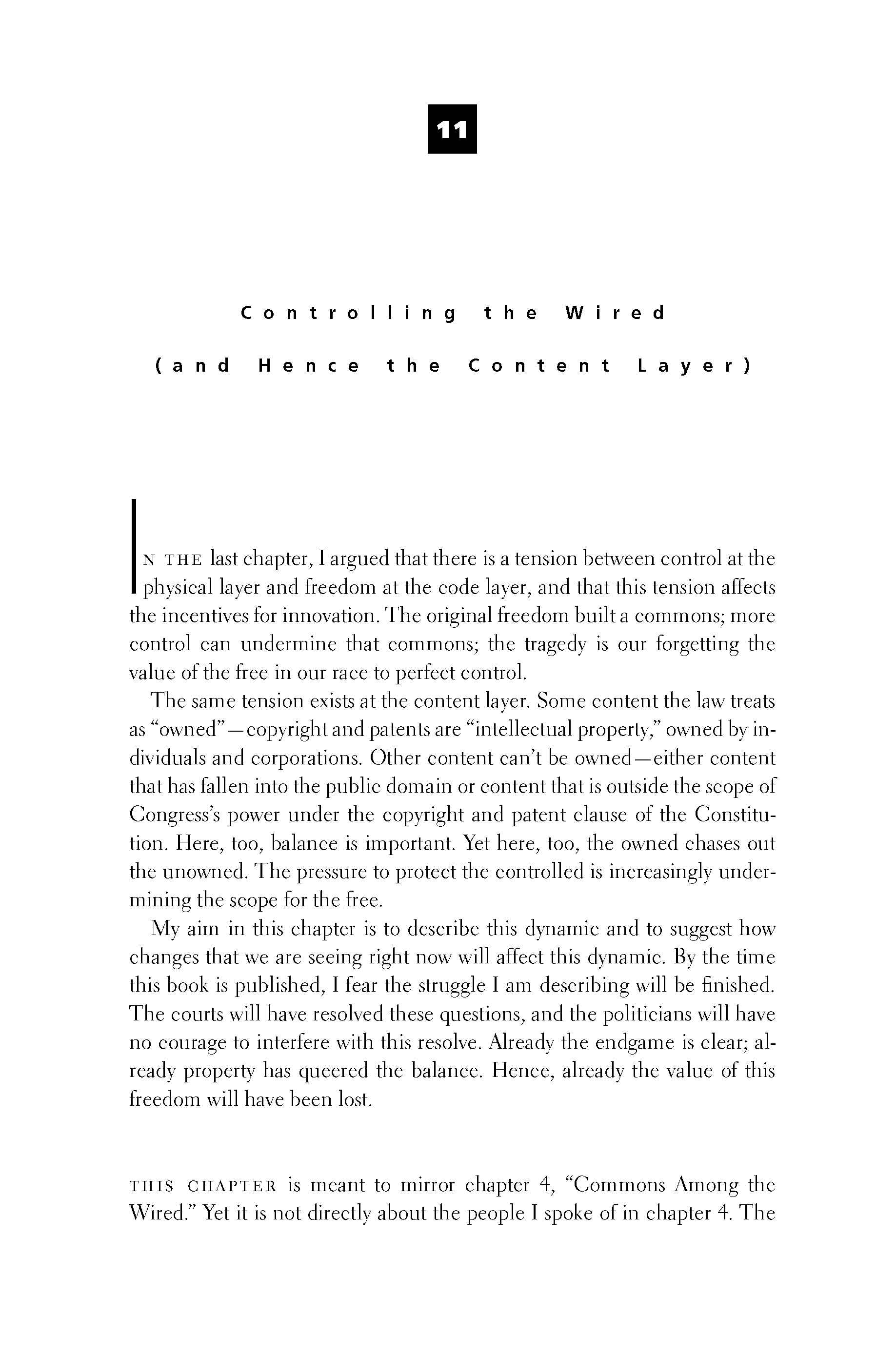 p176 _
-chap- _
toc-1 _
p177w _
toc-2 _
+chap+ _
p178
p176 _
-chap- _
toc-1 _
p177w _
toc-2 _
+chap+ _
p178
In the last chapter, I argued that there is a tension between control at the
physical layer and freedom at the code layer, and that this tension affects
the incentives for innovation. The original freedom built a commons; more
control can undermine that commons; the tragedy is our forgetting the
value of the free in our race to perfect control.
The same tension exists at the content layer. Some content the law treats
as "owned" -- copyright and patents are "intellectual property," owned by in-
dividuals and corporations. Other content can't be owned -- either content
that has fallen into the public domain or content that is outside the scope of
Congress's power under the copyright and patent clause of the Constitu-
tion. Here, too, balance is important. Yet here, too, the owned chases out
the unowned. The pressure to protect the controlled is increasingly under-
mining the scope for the free.
My aim in this chapter is to describe this dynamic and to suggest how
changes that we are seeing right now will affect this dynamic. By the time
this book is published, I fear the struggle I am describing will be finished.
The courts will have resolved these questions, and the politicians will have
no courage to interfere with this resolve. Already the endgame is clear; al-
ready property has queered the balance. Hence, already the value of this
freedom will have been lost.
///\\\
This chapter is meant to mirror Chapter 4, "Commons Among the
Wired." Yet it is not directly about the people I spoke of in Chapter 4. The
[[177]]
p176 _
-chap- _
toc-1 _
p177w _
toc-2 _
+chap+ _
p178